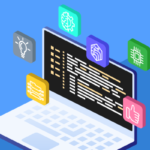Artificial Intelligence (AI) has become an integral part of financial markets, revolutionizing the way traders forecast trends, execute trades, and manage risks. Among the various applications of AI, generative models have gained significant attention for their ability to create realistic data samples and generate valuable insights. In the realm of finance, generative AI techniques are increasingly being employed for forecasting, trading strategies, and risk management, promising to enhance decision-making processes and drive better outcomes for investors.
Forecasting with Generative AI
Forecasting is a cornerstone of successful trading in financial markets. Generative AI models, particularly Generative Adversarial Networks (GANs) and Variational Autoencoders (VAEs), have shown remarkable capabilities in generating synthetic data that closely mimic real-world financial data distributions.
These models can learn the underlying patterns and structures in historical data and generate plausible future scenarios. For instance, GANs can generate synthetic time series data representing stock prices or economic indicators, enabling traders and analysts to explore various what-if scenarios and anticipate potential market movements.
By leveraging generative AI for forecasting, financial institutions can improve their decision-making processes, identify emerging trends, and mitigate risks associated with market volatility.
Trading Strategies
Generative AI has also made significant strides in the development of trading strategies. Reinforcement learning techniques combined with generative models have enabled the creation of autonomous trading agents that learn and adapt to changing market conditions.
These agents can generate synthetic market data to train and refine their trading strategies in a simulated environment, before deploying them in real-world trading scenarios. By continuously learning from market data, generative AI-powered trading systems can exploit market inefficiencies, optimize trade execution, and enhance overall portfolio performance.
Moreover, generative models can be used to generate alternative scenarios and stress-test trading strategies under different market conditions, providing traders with valuable insights into potential risks and opportunities.
Risk Management
Effective risk management is essential for preserving capital and ensuring long-term success in financial markets. Generative AI plays a crucial role in risk management by enabling the generation of synthetic data for stress testing, scenario analysis, and modelling extreme events.
By simulating various market scenarios using generative models, financial institutions can assess the potential impact of adverse events on their portfolios and implement appropriate risk mitigation strategies. Additionally, generative AI techniques can help in constructing realistic market scenarios for regulatory compliance, such as Comprehensive Capital Analysis and Review (CCAR) and Dodd-Frank Act Stress Testing (DFAST).
Furthermore, generative models can assist in the generation of synthetic data for training risk models, especially in cases where historical data is limited or unavailable. This allows financial institutions to build more robust risk models that capture a wider range of potential outcomes.
Challenges and Future Directions
While generative AI holds great promise for transforming financial markets, several challenges remain. One of the primary concerns is the interpretability of generated data and models, as complex generative models often lack transparency in their decision-making processes.
Additionally, ensuring the robustness and stability of generative AI models in dynamic and unpredictable market environments is crucial. Adversarial attacks, data biases, and overfitting are among the challenges that need to be addressed to build reliable generative models for financial applications.
Looking ahead, future research in generative AI for financial markets will likely focus on addressing these challenges, as well as exploring new techniques to improve the accuracy, efficiency, and interpretability of generative models. Advances in areas such as explainable AI, federated learning, and causal inference are expected to further enhance the capabilities of generative AI in forecasting, trading, and risk management.
Generative AI holds immense potential to revolutionize financial markets by providing advanced forecasting capabilities, enhancing trading strategies, and improving risk management practices.
As the technology continues to evolve, financial institutions that embrace generative AI will gain a competitive edge in navigating the complexities of modern finance and delivering superior outcomes for their clients and stakeholders.
















Leave a comment